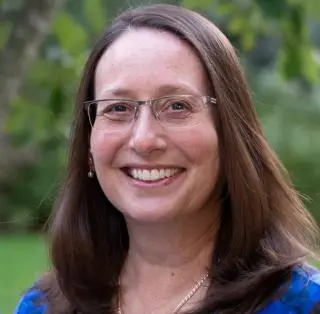
Washington, DC—Carnegie’s Alycia Weinberger and collaborators from the University of Texas at Austin and the Korean Astronomy and Space Science Institute received last month a $1.2 million grant from the Heising-Simons Foundation to develop an instrument for the Magellan telescopes at Carnegie’s Las Campanas Observatory in Chile that will enable breakthroughs in our understanding of the planet formation process.
Called MagNIFIES, for Magellans' Near-Infrared Five-band Immersion grating Efficient Spectrograph, the completed instrument will have the largest simultaneous spectral coverage of any high-resolution spectrograph in the world. It was the brainchild of Weinberger and UT Austin Vice President for Research Daniel Jaffe, who is the principal investigator on the grant.
“Taking advantage of the Magellan telescopes’ incredible view of the Milky Way and the immense sensitivity and efficiency of MagNIFIES, once completed, we believe we can revolutionize our understanding of young stars and the material from which the planets that orbit them are born,” Weinberger explained.
In their youth, stars are surrounded by a rotating disk of gas and dust—the raw materials for building planets. To make the next big leap in planetary science, it’s crucial that scientists enhance their ability to observe these disks and see how they interact with any baby planets that are gestating in them, as well as how the composition and distribution of disk materials contributes to the planetary system’s ultimate architecture.
“There is tremendous diversity among the thousands of exoplanets discovered so far and improving our ability to study protoplanetary disks will help us understand how such variety arises,” Weinberger added.
MagNIFIES will also allow astronomers to study the molecular makeup of the atmospheres of distant worlds in unprecedented detail. Eventually, MagNIFIES will move across Las Campanas Observatory from Magellan to the Giant Magellan Telescope. Carnegie and UT are also both partners in constructing this next-generation extremely large telescope. In both implementations, this new spectrograph could reveal a host of information about the location in the disk where the planet formed, interactions between the planet’s surface and atmosphere, and even perhaps signs of life.
Unlike other instruments that could take hours to detect a single molecule, MagNIFIES will be able to simultaneously search for a whole suite of interesting materials. Eventually, the instrument will enable an improved understanding of what factors could make an exoplanet capable of hosting and sustaining life.
“I hope MagNIFIES will improve our understanding of the nature of a variety of different types of bodies in our galaxy, and make our understanding of the universe better,” Jaffe said in a statement to the UT Austin news service.
__________________
The Heising-Simons Foundation is a family foundation based in Los Altos and San Francisco, California. The Foundation works with its many partners to advance sustainable solutions in climate and clean energy, enable groundbreaking research in science, enhance the education of our youngest learners, and support human rights for all people.
